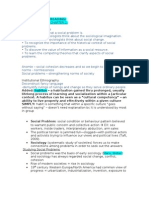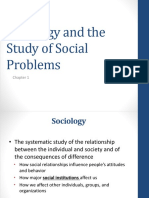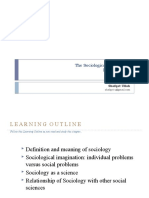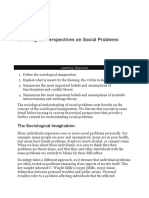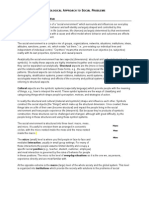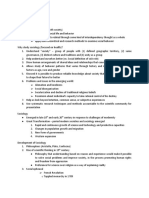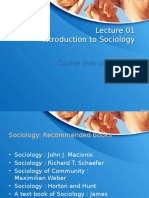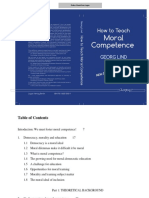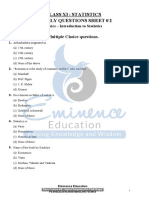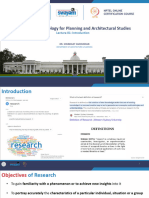100% found this document useful (2 votes)
549 views59 pagesUnderstanding Social Problems
This document provides an introduction to the concepts of social problems from a sociological perspective. It defines social problems as conditions in society that many people view as problems and in need of collective action for change. These problems can include things like poverty, crime, and discrimination. The document discusses debates around defining and measuring social problems. It also introduces key concepts for understanding social problems sociologically, such as using the sociological imagination to see how social structures and culture influence private troubles and public issues.
Uploaded by
waqas_baloch_1Copyright
© Attribution Non-Commercial (BY-NC)
We take content rights seriously. If you suspect this is your content, claim it here.
Available Formats
Download as PPT, PDF, TXT or read online on Scribd
100% found this document useful (2 votes)
549 views59 pagesUnderstanding Social Problems
This document provides an introduction to the concepts of social problems from a sociological perspective. It defines social problems as conditions in society that many people view as problems and in need of collective action for change. These problems can include things like poverty, crime, and discrimination. The document discusses debates around defining and measuring social problems. It also introduces key concepts for understanding social problems sociologically, such as using the sociological imagination to see how social structures and culture influence private troubles and public issues.
Uploaded by
waqas_baloch_1Copyright
© Attribution Non-Commercial (BY-NC)
We take content rights seriously. If you suspect this is your content, claim it here.
Available Formats
Download as PPT, PDF, TXT or read online on Scribd
/ 59



